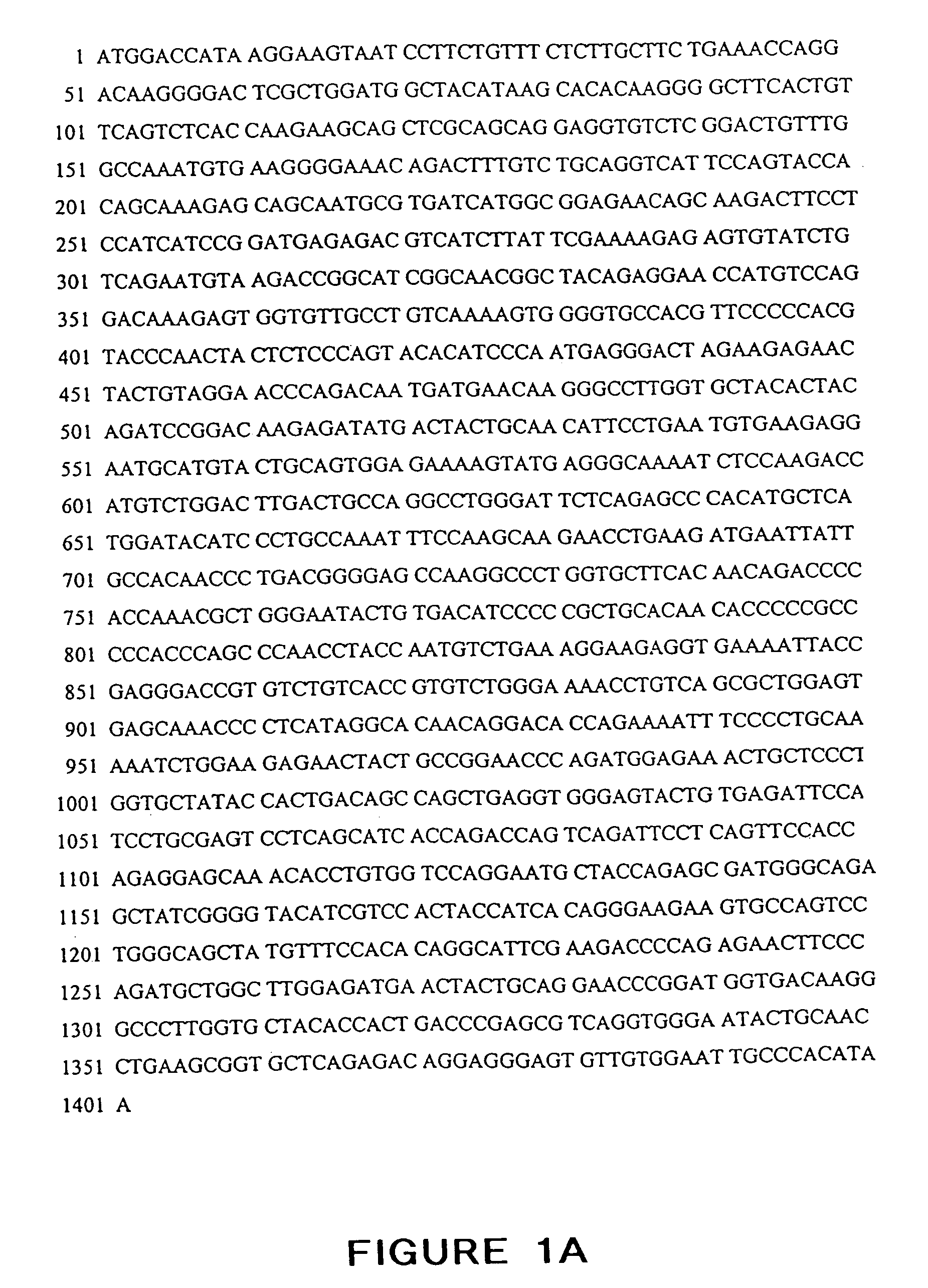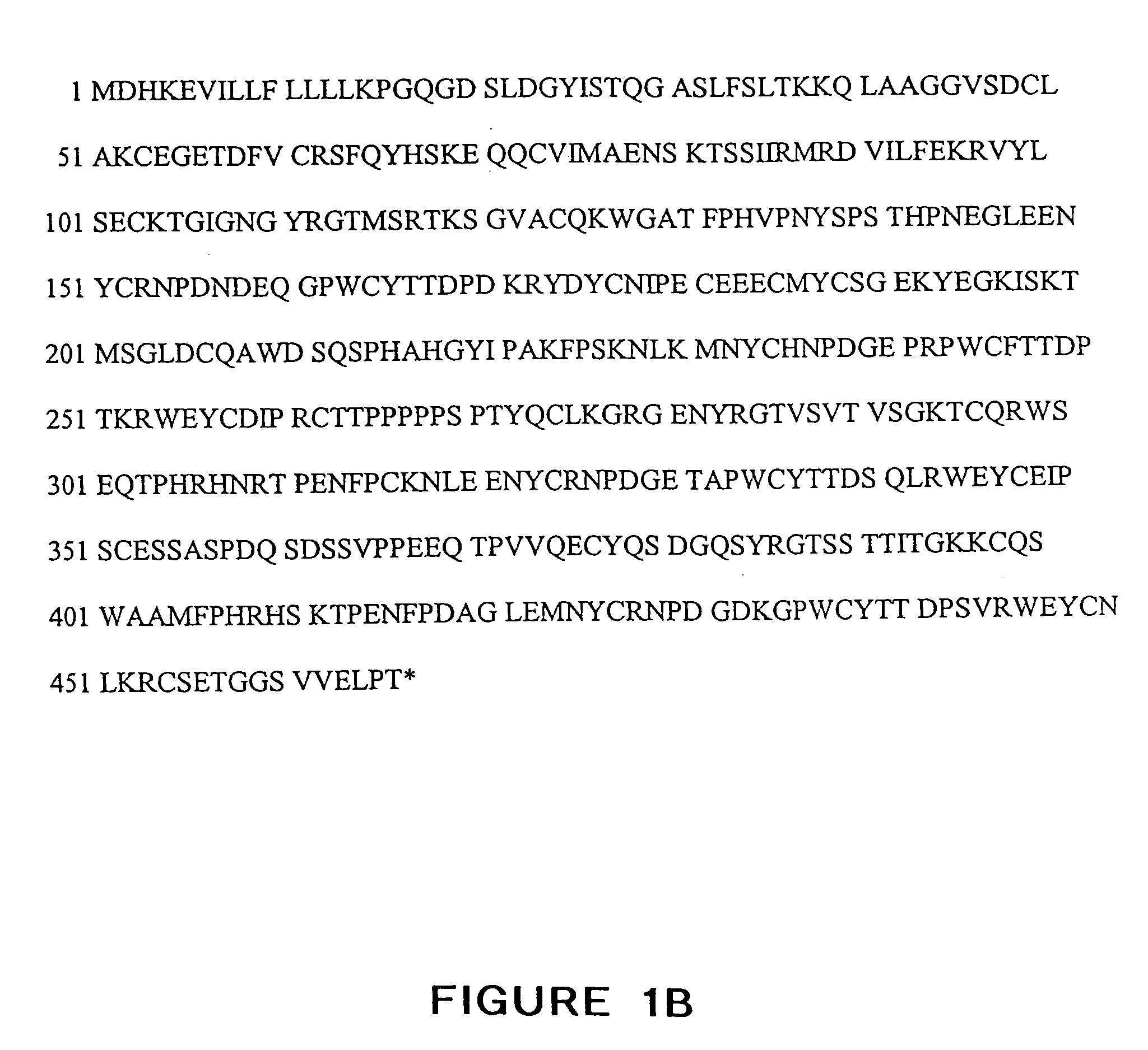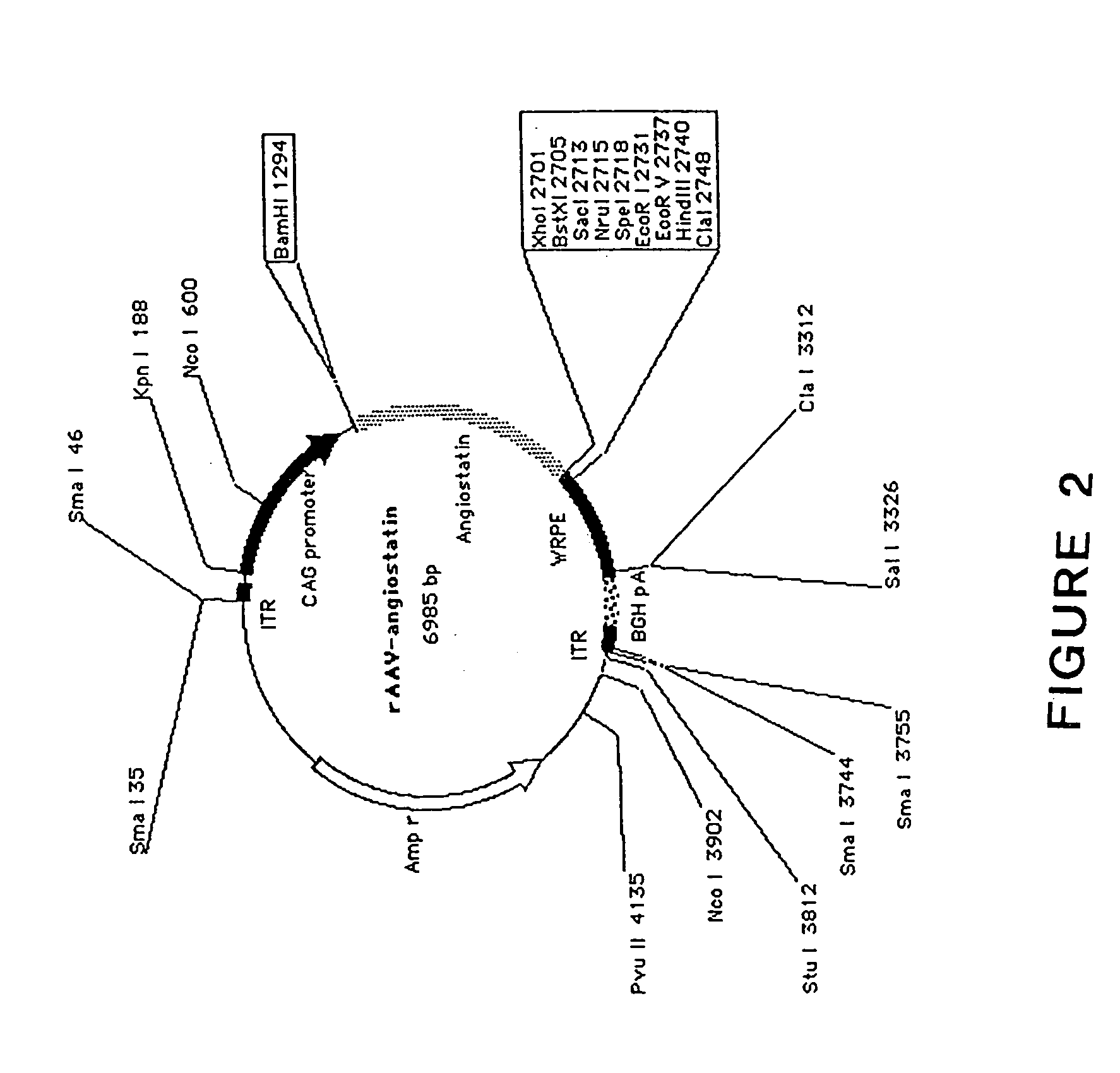Adeno-associated virus mediated B7.1 vaccination synergizes with angiostatin to eradicate disseminated liver metastatic cancers
a technology of adenoassociated virus and angiostatin, which is applied in the field of therapeutic agents, can solve the problems of poor prognosis of metastatic liver cancer, lack of effective treatment, and inability to effectively treat liver metastases, and achieve the effect of improving the survival rate of mi
- Summary
- Abstract
- Description
- Claims
- Application Information
AI Technical Summary
Benefits of technology
Problems solved by technology
Method used
Image
Examples
example 1
6. EXAMPLE 1
[0149] 6.1 Generation of rAAV-Angiostatin
[0150] In the expression plasmid vector, chicken beta-actin promoter with cytomegalovirus (CMV) enhancer (CAG promoter) (Xu L. et al. CMV-beta-actin promoter directs higher expression from an adeno-associated viral vector in the liver than the cytomegalovirus or elongation factor 1 alpha promoter and results in therapeutic levels of human factor X in mice. Hum Gene Ther. 2001; 12(5): 563-7), reporter gene, the 1.4-kb cDNA encoding full length of mouse angiostatin (SEQ ID NO:1) consisting of the signal peptide and first four kringle regions of mouse plasminogen, and poly A sequences, were inserted between the inverted terminal repeats (ITRs) using appropriate restriction enzymes (see FIG. 2). A woodchuck hepatitis B virus post-transcriptional regulatory element (WPRE) was inserted into this construct to boost expression levels (Donello J. et al., Woodchuck hepatitis virus contains a tripartite post-transcriptional regulatory elemen...
example 2
7. EXAMPLE 2
[0199] 7.1 Methods
[0200] 7.1.1 Generation of AAV-Angiostatin and AAV-B7.1
[0201] The cytomegalovirus (CMV) enhancer / chicken beta-actin promoter, reporter gene, a 1.4-kb cDNA fragment encoding full length of mouse angiostatin consisting of the signal peptide and the first four kringle regions of mouse plasminogen, or a 1.2 kb cDNA fragment encoding fill-length mouse B7.1, and poly A sequences were inserted between the inverted terminal repeats (ITRs) using appropriate restriction enzymes (see Xu L. et al. CMV-beta-actin promoter directs higher expression from an adeno-associated viral vector in the liver than the cytomegalovirus or elongation factor 1 alpha promoter and results in therapeutic levels of human factor X in mice. Hum Gene Ther. 2001; 12: 563-7). A woodchuck hepatitis B virus post-transcriptional regulatory element (WPRE) was also inserted into this construct to boost expression levels (Donello J. et al. Woodchuck hepatitis virus contains a tripartite posttrans...
PUM
| Property | Measurement | Unit |
|---|---|---|
| Composition | aaaaa | aaaaa |
Abstract
Description
Claims
Application Information
 Login to View More
Login to View More - R&D
- Intellectual Property
- Life Sciences
- Materials
- Tech Scout
- Unparalleled Data Quality
- Higher Quality Content
- 60% Fewer Hallucinations
Browse by: Latest US Patents, China's latest patents, Technical Efficacy Thesaurus, Application Domain, Technology Topic, Popular Technical Reports.
© 2025 PatSnap. All rights reserved.Legal|Privacy policy|Modern Slavery Act Transparency Statement|Sitemap|About US| Contact US: help@patsnap.com



